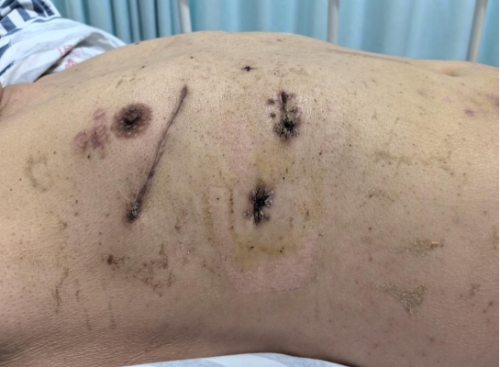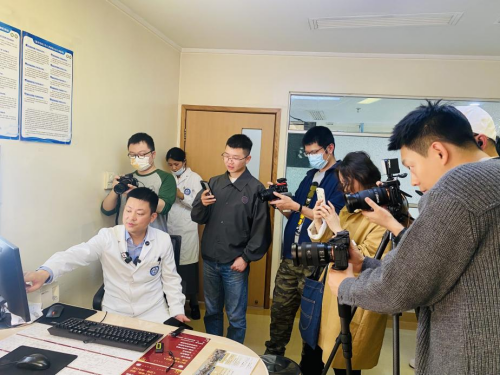Under the guidance of Professor Lunxu Liu, Professor Qiang Pu's team from the West China Hospital Lung Transplantation Center has successfully completed a thoracoscopic bilateral sequential lung transplantation surgery (via ECMO) on a 62-year old male patient. The patient was transferred from the MICU to a general ward 4 days after the surgery. He recovered and returned home 30 days later. The follow-up visits show that the patient's recovery is good.
There have been no reported cases of bilateral sequential lung transplantation under total thoracoscopy worldwide.Bilateral sequential lung transplantation via thoracoscopy is performed without incision and does not need to widen the intercostal space. Compared with open incision and small incision by thoracoscopy for lung transplantation, the surgical trauma of patient is significantly reduced and the rehabilitation process is greatly accelerated.However, the surgery is more difficult, and the surgical team needs to complete bronchial anastomosis, pulmonary artery anastomosis, and left atrial sleeve anastomosis under full thoracoscopy in a narrow space, requiring high operational accuracy.
The male patient had suffered from interstitial lung disease for many years. Prior to surgery, the patient had a terminal stage lung disease and depended on continuous oxygen therapy for survival.
Under the guidance of Lunxu Liu, the lung transplantation team had repeatedly demonstrated and simulated the surgical process, estimated potential risks and emergencies, and worked out a detailed and meticulous surgical plan with an emergency response scheme. The final decision was a total thoracoscopic surgery.
The patient was matched with a suitable donor lung on January 4, 2024. The thoracic surgery, anesthesiology, ECMO, and operating room teams took 10 hours to overcome the difficulties of frozen resection of the diseased lung in the hilar lymph nodes, as well as the difficulty of anastomosis of bronchi, pulmonary arteries, and left atrium. The surgery was successfully completed under thoracoscopy.

Thoracoscopy surgical incision (unilateral)

Prof. Qiang Pu meets the press.
Compared with cutting the sternum horizontally and making a 30cm long Clam- Shell incision, thoracoscopic surgery (as shown in the figure) has a single main operating hole of only about 8cm and does not require opening the intercostal space, which greatly reduces surgical trauma. After the surgery, the patient's pain was distinctively alleviated, the pain range was narrowed, and the pain duration was shortened to a large extend.
Specifically speaking, the patient could clear his own airways and expel phlegm, which is beneficial for the prevention and treatment of postoperative pulmonary infections. Four days after surgery, the patient was transferred from the MICU back to the regular ward and was able to get out of bed and move around on his own. He went back home 30 days after the surgery.Subsequent follow-up showed that the patient's recovery was good, and he returned to normal life.
